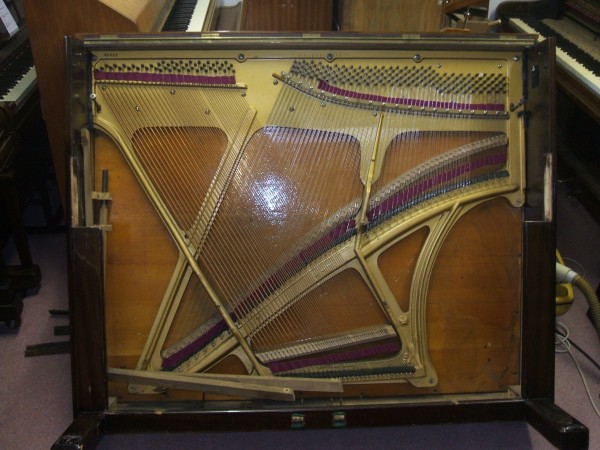Overstrung.
A piano that is “overstrung” is not in need of any tranquilizers! It simply means that the strings are grouped in two ways: the base strings, about 30 of them slant from top left to bottom right, and the rest slant from top right to bottom left. To save space they overlap, or are strung over each other, at the bottom – hence, “Overstrung”.
 Above is a photo of an overstrung piano without its key-bed or action. It is, in fact, in the process of being rebuilt having had a rather hard life being roughly hauled around.
Above is a photo of an overstrung piano without its key-bed or action. It is, in fact, in the process of being rebuilt having had a rather hard life being roughly hauled around.
Straightstrung.
The alternative to an Overstrung piano is a “straight strung”. These tend to be older pianos, where all the strings are parallel to each other.
Overdamped.
The reaction of some customers to this description is to ask if anything can be done about it? It is not a problem; it is a description of where the dampers are placed. In this case they are act on the strings above the hammers. These tend to be found in older pianos, and are to be avoided in most cases.
Underdamped.
Again, this is not a condition requiring urgent attention. The dampers act on the strings below the hammers. All modern upright pianos are underdamped as the damping is far more efficient and works better for longer.






 Visit Today : 8
Visit Today : 8  Total Visit :18797
Total Visit :18797 Hits Today :11
Hits Today :11 Total Hits :38416
Total Hits :38416 Who's Online :1
Who's Online :1